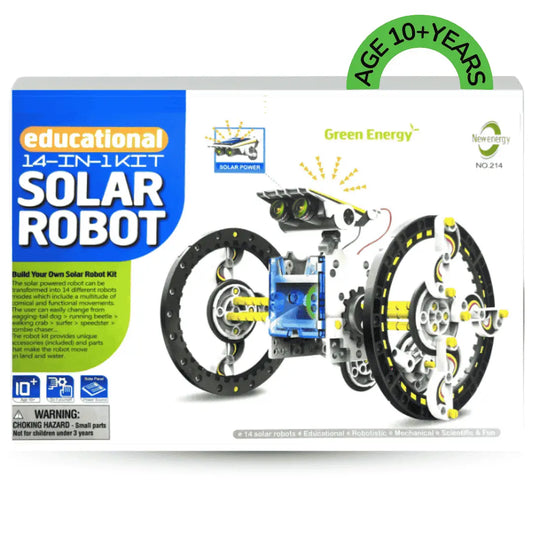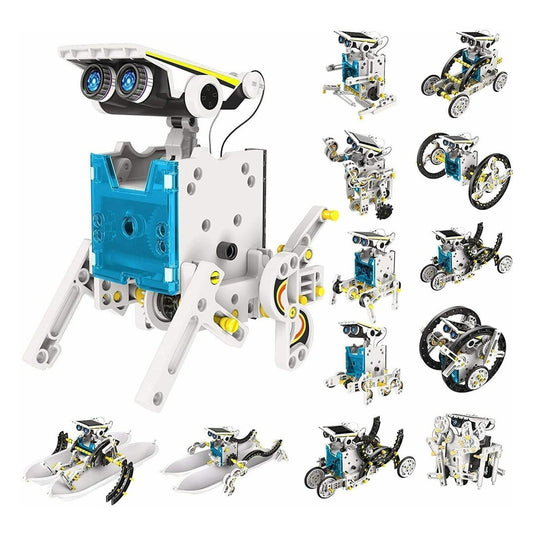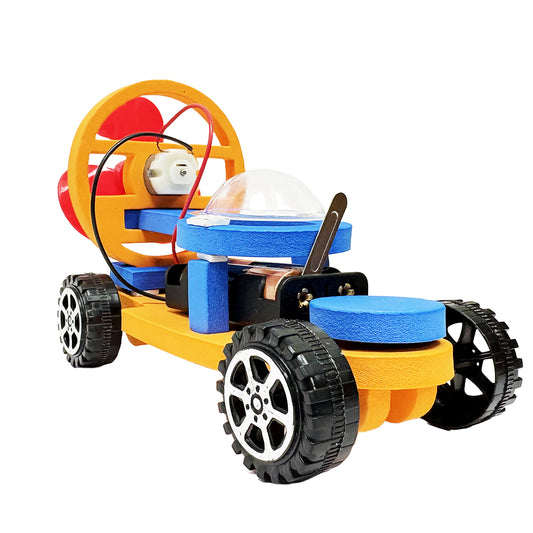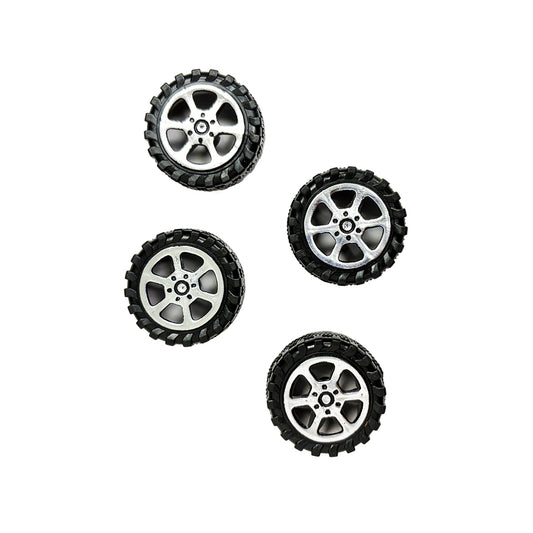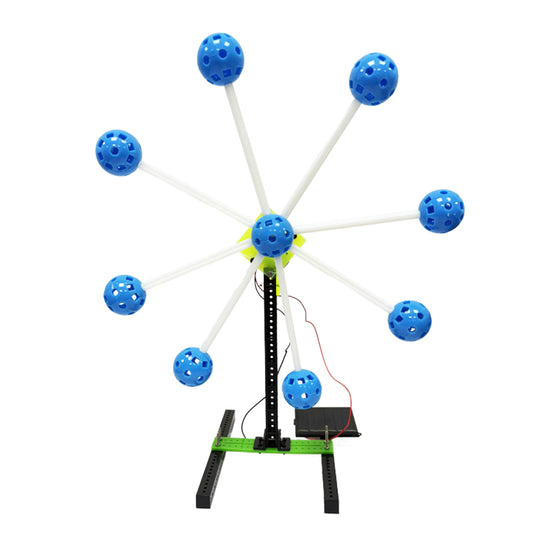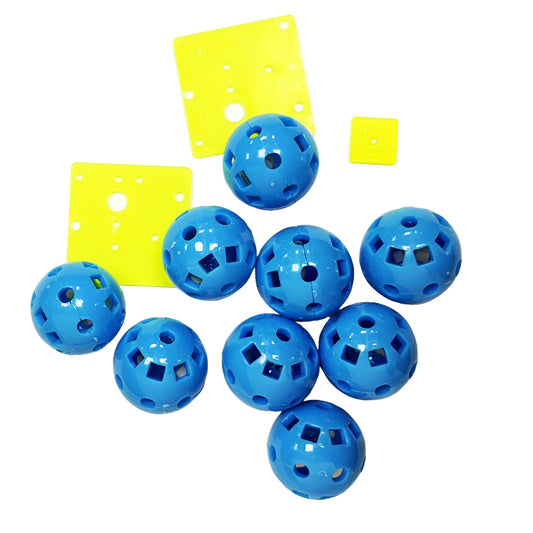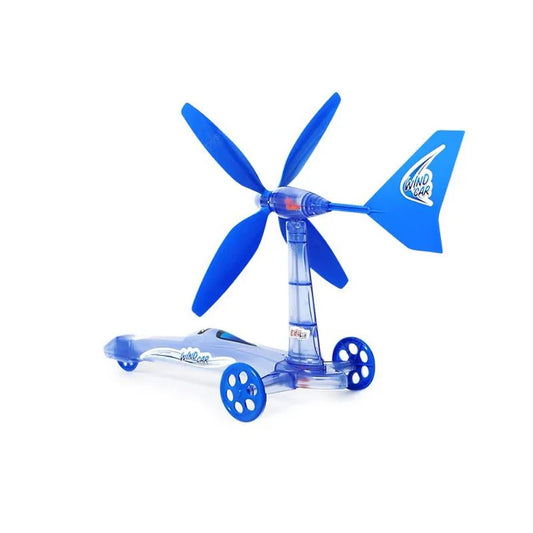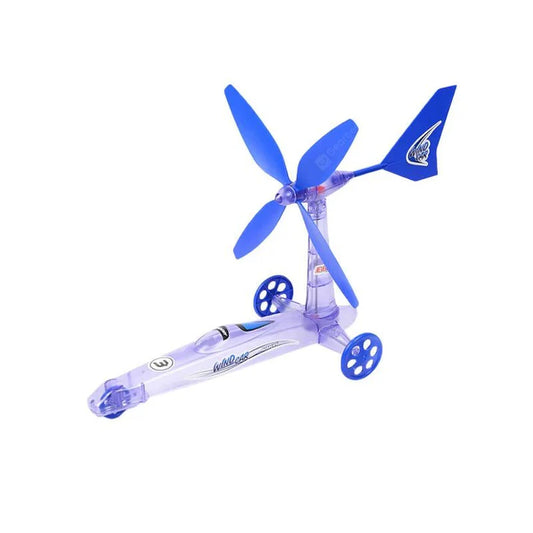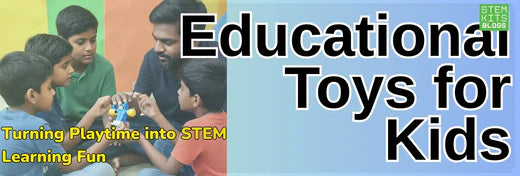
Educational Toys for Kids: Turning Playtime into STEM Learning Fun
IEM RoboticsTable of Content
- What Are Educational Toys for Kids?
- Importance of Play in Learning
- Benefits of Educational Toys for Kids
- Popular Categories of Educational Toys for STEM Learning
- Role of Parents in STEM Learning Through Toys
- Conclusion
The world is evolving at lightning speed due to technology and innovation, altering how people live, work, and learn. But, as parents, we are all looking for ways for our children to be sufficiently prepared for this exciting future and changing future—and that's where STEM education plays a leading role. It's equipping young minds with the requisite knowledge and skills to thrive in a fast-paced, technology-driven world. But here’s the question: how do we make STEM learning simple, engaging, and fun for kids? That’s where educational toys for kids come in. Learning toys offer much more than entertainment. They become tools to turn learning into an adventure by providing educational content in games, interactive learning experiences for kids with building blocks that introduce engineering fundamentals, and programming robots to make coding feel more like a game. These toys are perfect for developing kids' creativity, critical thinking, and problem-solving skills for success in the 21st century. As the world of industries raises the demand for more tech-savvy minds, giving your kids learning kits and study games becomes a great idea, almost a mandate. So, let's uncover how these learning toys create a difference, why they are essential for learning STEM disciplines, and what is better to choose to stimulate curiosity about discovery in a child's mind. Let's dive deeper!
What Are Educational Toys for Kids?
Educational toys are designed to combine fun and learning, making them an invaluable tool for children’s development. These learning toys stimulate curiosity and encourage children to explore new concepts, often integrating Science, Technology, Engineering, and Mathematics (STEM) elements. Examples include building blocks, puzzles, coding kits, science experiment sets, and robotics toys. Unlike traditional toys, educational toys have a dual purpose: to entertain and to teach. They are tailored to specific age groups and developmental stages, ensuring children are challenged appropriately as they grow. These toys often promote skills like problem-solving, critical thinking, creativity, and logical reasoning, laying a strong foundation for lifelong learning.
Importance of Play in Learning
Play is essential to a child’s growth and development. Through play, children experiment with the world around them, explore their creativity, and develop social, emotional, and cognitive skills. Educational toys for kids enhance this process by integrating structured learning objectives into playtime. For example, constructing a tower with building blocks teaches engineering principles, while solving puzzles develops patience and logical thinking. Play-based learning also boosts engagement, as children enjoy fun and interactive activities. By making learning enjoyable, educational toys turn playtime into an opportunity for growth and discovery.
Benefits of Educational Toys for Kids
Educational toys play a significant role in the growth and development of a child by offering a combination of fun and learning, thus providing a complete experience for development. These learning toys are specifically crafted to engage young minds and further develop essential skills necessary to succeed in life. Therefore, educational toys for kids are not just playthings; they nourish creativity, critical thinking, and emotional growth. Introducing educational toys at an early age will allow parents and educators to create an enriching environment that prepares children for all the complexities of the world, which will be filled with skills that last a lifetime.
Here are some of the benefits of using educational toys to learn:
● Boost Creativity and Imagination
Educational toys inspire open-ended play, wherein children learn to be creative and design new products. For instance, building kits, learning kits, art kits, or magnetic tiles allows children to construct specific designs or scenarios. This type of play promotes divergent thinking, essential for solving problems and facing changes in other life stages later on.
● Developing Cognitive and Problem-Solving Skills
Puzzles, mazes, and strategy games challenge children's thinking skills to solve problems. These activities promote logical reasoning, memory retention, and decision-making skills. For example, solving a jigsaw puzzle teaches children to analyze patterns, focus on details, and think strategically—skills applicable in everyday life.
● Enhance Fine Motor Skills and Hand-Eye Coordination
Most educational toys, like stacking blocks, threading beads, or assembling models, require physical manipulation. All these activities help a child improve his motor skills, enhance hand-eye coordination, and increase talent. Physical engagement is significant for younger children because they develop the foundational motor abilities for writing, drawing, and other tasks.
● Developing STEM Learning
One of the main advantages of educational toys is that they can introduce STEM concepts early in a child's life. For example, coding robots, science kits, and engineering sets are all hands-on experiences of STEM principles. A coding toy might teach children how algorithms work, while a science experiment kit might introduce them to introductory chemistry. These experiences build confidence and competence in STEM, preparing children for future academic and career success.
● Build Social and Emotional Skills
Most educational toys are for group games that facilitate teamwork, communication, and cooperation. Playing in groups helps children learn to share, negotiate, and resolve conflicts. Learning toys that play the roles of either kitchen sets or doctor kits also enable children to play out various emotions and social roles, helping them achieve emotional intelligence and empathy.
● Increase in Self-Confidence and Autonomy
When children solve a puzzle or construct a complex structure and succeed, they feel accomplished. This makes them more confident and develops a "can-do" attitude. Educational toys also allow children to explore independently, making them feel more autonomous and self-reliant.
● Fostering Lifelong Learning
Educational toys for kids create a love for learning because the process is enjoyable and rewarding. Whether discovering how gears work or experimenting with a chemistry kit, these toys nurture wonder that encourages children to continue asking questions and seeking knowledge for the rest of their lives.
● Support Academic Knowledge
Educational toys are additional devices meant to support academic thinking at school. Study toys using interactive globes, science kits, and math games make students have fun learning geography, biology, and mathematics as their learning subjects. Indeed, when play is integrated into learning, children can remember information and attain a more profound understanding of the material, which culminates in better achievement of academic knowledge.
Popular Categories of Educational Toys for STEM Learning
Educational toys have a wide range of utility in exposing children to concepts in the STEM fields. With diverse options, it is now possible for parents and teachers to choose what best serves the interests of a child and stage of development. Each category of educational toys helps children achieve specific aspects of STEM education while developing essential skills. Parents and educators foster a love for STEM learning that will last throughout school and professional life by including these toys in playtime activities. Here are the most popular categories in educational toys for STEM learning:
1. Kids Learning Kits
Kid's learning kits combine various STEM activities into a single package, offering a comprehensive learning experience. These kits encourage curiosity and experimentation, making complex concepts approachable for young learners. These kits often include:
● Science experiment kits: Enable hands-on exploration of chemical reactions, physics principles, and biological processes.
● Engineering kits: Focus on building structures, machines, or vehicles to introduce mechanical concepts.
● Technology kits: Include beginner-friendly tools for robotics, electronics, or coding.
2. Building and Construction Toys
Construction toys, such as LEGO, magnetic tiles, or wooden blocks, are excellent tools for teaching engineering concepts. They encourage imagination and problem-solving skills as kids create structures from scratch and observe the effects of combining different materials. These toys also help children develop spatial awareness and an understanding of stability and the balance of geometry.
3. Coding and Robotics Toys
As technology becomes increasingly essential, coding and robotics toys are popular. The following are perfect for developing technical skills and logical thinking early. Some examples include:
● Coding robots: Teach your child to write simple programs that control movements and actions.
● App-based coding games: Use interactive platforms like Scratch or Osmo to make programming fun and accessible.
● Robotics kits: Allow kids to build and program their robots, combining engineering and technology.
4. Science Experiment Kits
Science kits promote inquiry-based learning with hands-on chemistry, biology, and physics experiments. For example, children can make a working volcano, grow crystals, or observe magnetic forces. Science becomes tangible and exciting.
5. Mathematical Toys
Math-focused learning toys, including number puzzles, abacuses, and geometry sets, help children develop numerical literacy and problem-solving skills. These toys present mathematical concepts that are fun and interactive, transforming abstract ideas into real-world applications.
Role of Parents in STEM Learning Through Toys
Parents play a key role in nurturing their child’s love for STEM (Science, Technology, Engineering, and Mathematics), and learning toys are the perfect starting point. While the toys spark curiosity and exploration, a parent’s guidance and encouragement genuinely turn playtime into meaningful learning. But how can parents take STEM play to the next level? By creating a supportive environment, joining in the fun, and celebrating those “aha!” moments, they can help their kids build confidence and excitement around STEM concepts. It’s about more than play—shaping a lifelong passion for discovery and innovation. So, let’s dive into how parents can make the most of STEM toys to enrich their child’s learning journey!
Creating a Stimulating Environment
Parents should foster a nurturing learning environment that stimulates STEM learning. Creating an environment at home that encourages children to explore, experiment, and play is essential for their inspiration. Various educational toys, such as building blocks, coding, and science experiment kits, allow children to explore and learn STEM concepts over time.
Participating in Play
Parents do not have to be experts in STEM to support their child's learning. Engaging in play with children enhances the experience. Building a model or conducting a simple science experiment can help parents connect with their children while teaching the value of teamwork and perseverance.
Providing Guidance and Support
Independent play is essential, but some STEM study toys and kits require initial guidance. Parents help their children understand the instructions, work through problems, or explore concepts more deeply. This involvement assists in building a child's confidence while helping to overcome problems without frustration.
Recognizing and Celebrating Achievements
Acknowledging a child's efforts and successes, no matter how small, increases their confidence and motivates them to learn more. Whether solving a puzzle or programming a robot, celebrating these milestones reinforces a child's interest in STEM and encourages them to take on new challenges.
Conclusion
Educational toys for kids are more than just fun—they are potent tools that equip children with the skills needed to thrive in a technology-driven world. These resources, from kids’ learning kits to study toys, make STEM learning accessible, engaging, and enjoyable. Educational study toys are among the most efficient learning tools in modern teaching through STEM education, including Science, Technology, Engineering, and Mathematics concepts. The educational toy connects theoretical teaching in the subject to real-life applications. By making science, technology, engineering, and mathematics accessible and fun, these toys empower children to acquire essential skills, build self-esteem, and embrace innovation with a confidence that will best position them to succeed in an ever-technologically advanced world.

